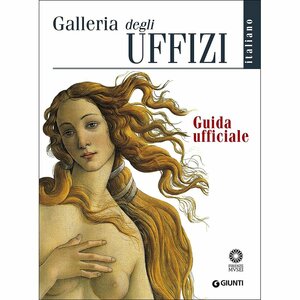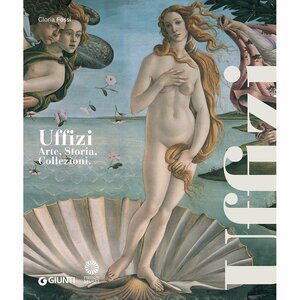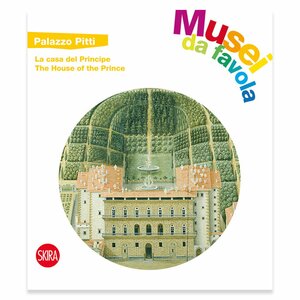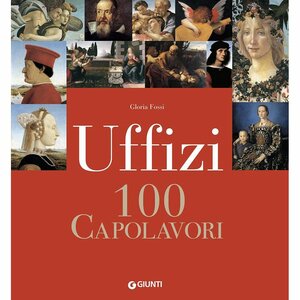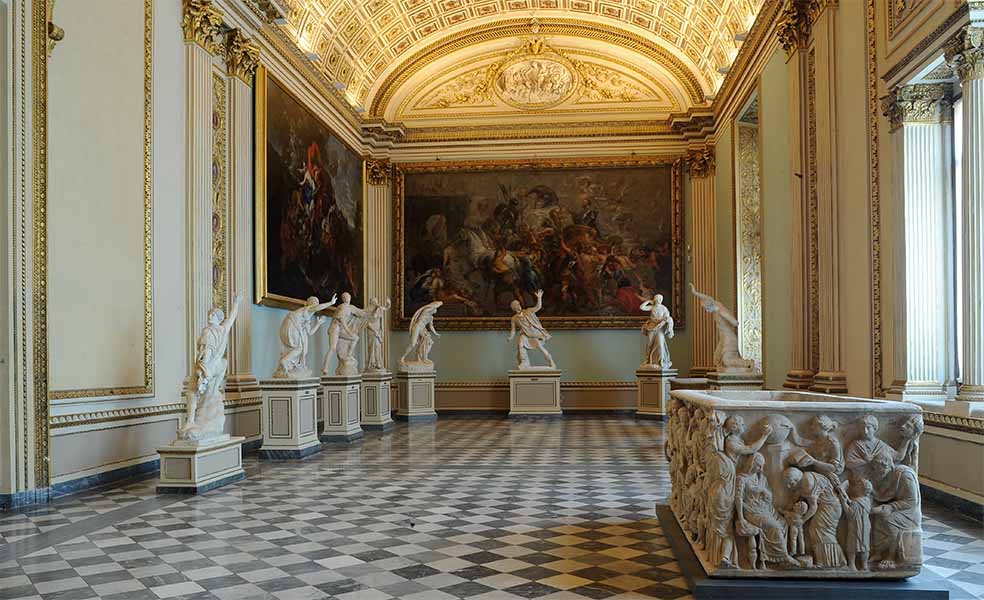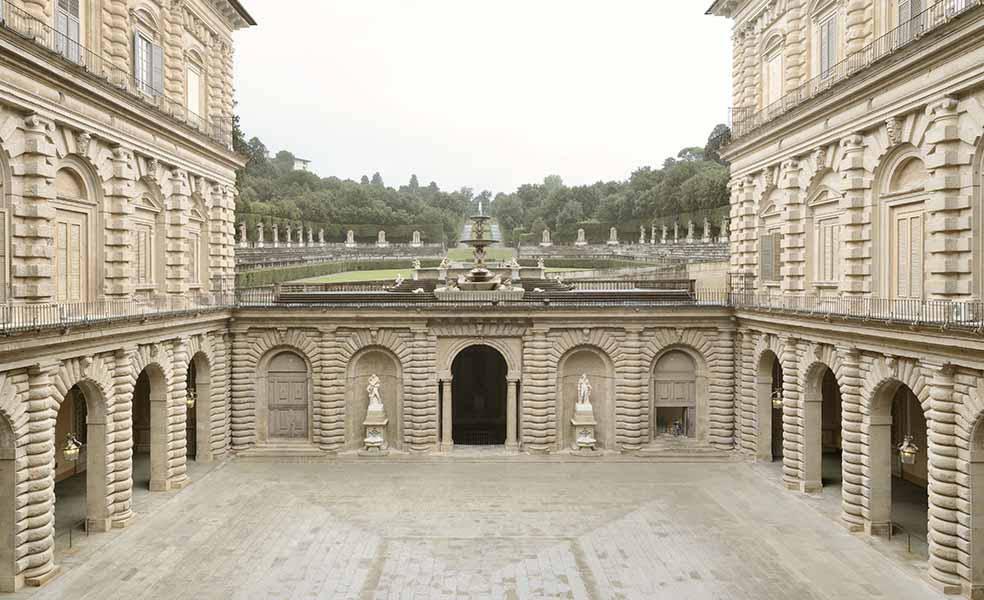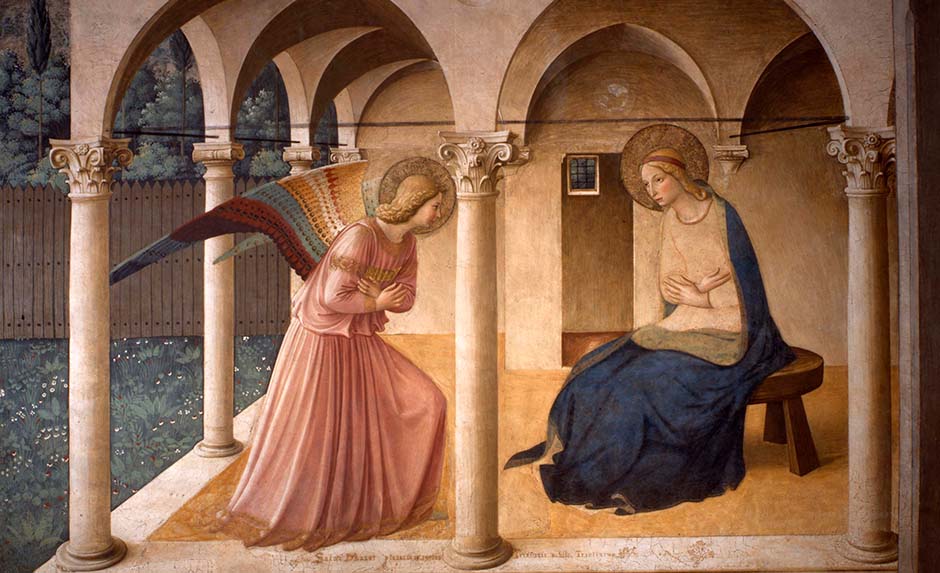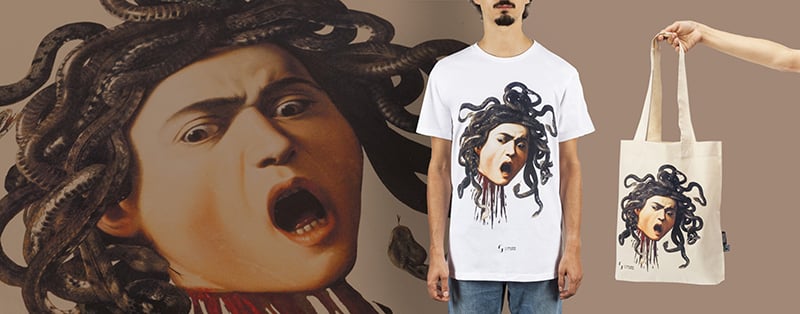Home / Experience / Raffaello
Raffaello
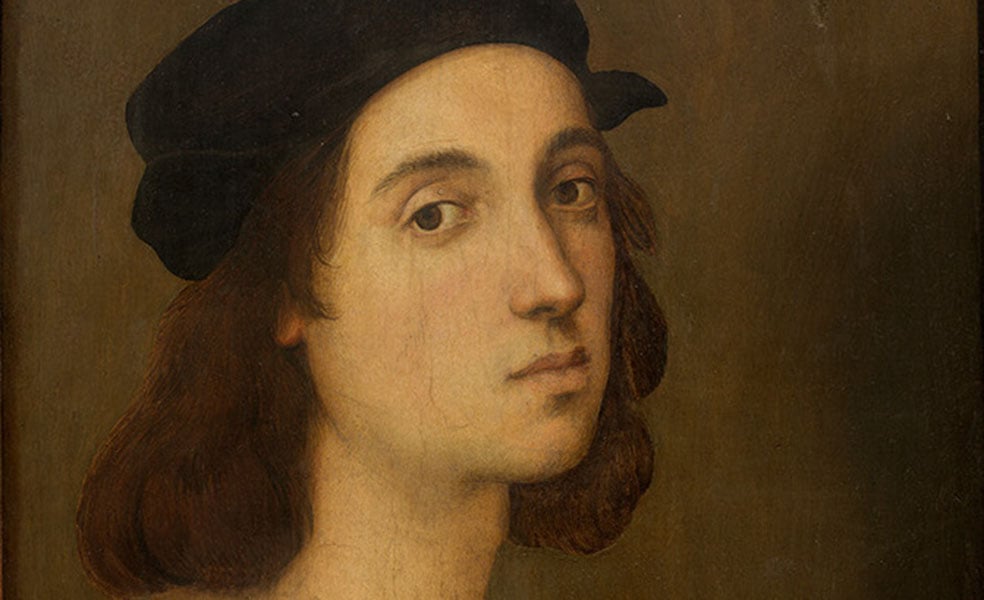
Painter and architect, Raffaello Sanzio represents the pinnacle of Renaissance art — a genius in constant pursuit of grace and harmony. Despite his brief life, his extraordinary talent profoundly shaped the history of art, influencing generations up to the 20th century.
Childhood at the Montefeltro Court
Born in Urbino in 1483, Raffaello grew up in the vibrant artistic environment of Federico da Montefeltro’s court, one of the most refined centres of Renaissance culture. His father, Giovanni Santi, worked there successfully as a painter and was the one to introduce the young Raffaello to art. Having lost his mother at the age of only eight, the boy received his first painting lessons from his father, who also showed him the works of Piero della Francesca, the Flemish painter Justus of Ghent, and Antonio del Pollaiolo in the Ducal Palace of Urbino.
Giovanni enjoyed privileged access to the palace and was also friends with many of the artists and intellectuals active in the city. Raffaello thus grew up surrounded by artistic stimuli and ideas that would deeply influence his personality and style.
However, another bereavement struck early: in 1494 his father also died, and Raffaello came under the protection of his uncle, Bartolomeo di Sante. His subsequent training is uncertain. The strong resemblance between some of his early works and those of Perugino suggests a possible apprenticeship in the Umbrian master’s workshop, although no definitive proof exists.
Artistic beginnings and the Florentine period
Whatever his training, Raffaello’s talent soon shone through. In 1500, at just eighteen, he signed a contract for an altarpiece.
The document refers to him as Rafael Johannis Santis de Urbino alongside with the word magister, meaning “master” — a title that reveals his already recognised talent.
Only two years later, he received his first commission outside the Duchy: together with the renowned Pinturicchio, he worked on the frescoes for the Biblioteca Piccolomini in Siena.
In 1504, he produced the work that most clearly recalls Perugino: Lo Sposalizio della Vergine, now housed in the Pinacoteca di Brera in Milan. The subject, title and even the composition of the scene are almost identical to the Umbrian master’s version, but Raffaello shows greater attention to perspective and to the arrangement of the architectural background.
That same year, he moved to Florence — an essential stop for any artist of the time — and remained there until 1508. Immersed in the artistic and cultural environment that gave birth to the Renaissance, the Urbinate’s extraordinary talent blossomed into new and magnificent forms. Inspired by Donatello, Masaccio and Luca della Robbia, and influenced by contemporaries such as Leonardo da Vinci, Michelangelo and Piero di Cosimo, he produced some of his most iconic works.
The Madonna del Cardellino
Among them, the Madonna del Cardellino, completed in 1506 for the wealthy merchant Lorenzo Naso and now preserved at the Galleria degli Uffizi. In this brightly coloured panel , Leonardo’s influence is evident in the pyramidal composition and in the interlocking glances and gestures of the figures, as well as the softly rendered landscape. Yet, unlike Leonardo’s mysterious aura, Raffaello’s scene exudes calm, genuine sweetness. The gestures are tender and familiar: Mary is a patient, joyful mother, not the solemn figure of pious sorrow foretelling her son’s death.
Portraits: private commissions and self-reflection
Although he maintained ties with his native region, during his Florentine years Raffaello focused mainly on religious subjects but also began to attract private commissions. Between 1504 and 1507 he painted two splendid portraits of Agnolo Doni and Maddalena Strozzi, now exhibited at the Uffizi. The couple were passionate about art and had also commissioned other great artists, such as Michelangelo, the author of the famous Tondo Doni (1505–1506, Uffizi, Florence). Raffaello’s diptych reflects his knowledge of both Italian and Flemish masters of the Renaissance, yet interpreted through his own original sensibility: the harmonious composition, precise details, and refined colour palette mark the birth of a distinctly personal style.
Many portraits were completed during that period, and among them, interestingly, is a self-portrait. Raffaello portrays himself in simple clothing — a black tunic over a white shirt — the typical attire of a painter. With this small work, he not merely declare his profession but he glorifies it, elevating it and making it worthy of being immortalised. Both creator and main subject of the work, the painter is, for Raffaello, a celebrity. It is no coincidence that in 1508 he left for Rome, where he would become a true star.
Life in Rome and the flourishing workshop
Summoned by Pope Julius II, Raffaello arrived in Rome to take part in the pontiff’s grand urban renewal projects. Within a few years, Rome was filled with artists such as Michelangelo and Bramante, with whom Raffaello would often collaborate — and at times clash. The first major work that the Urbinate undertook in Rome was the fresco decoration of the celebrated Stanze Vaticane, the apartments chosen by Julius II for himself, as he could not bear the idea of living in those of his predecessor, Alexander VI.
Initially, the painter had been commissioned to carry out some simple trial frescoes on the vault of the Stanza della Segnatura. However, the pope, enraptured by what Raffaello had just sketched, decided to entrust him with the decoration of the entire suite of rooms, even ordering the destruction of sections previously painted a century earlier by artists such as Piero della Francesca and Andrea del Castagno.
Moreover, the restoration of the rooms had already been entrusted to a highly respected group of painters, including Perugino, Lorenzo Lotto and Baldassarre Peruzzi, who were promptly dismissed after the pope saw Raffaello’s preliminary work. In the end, Raffaello and his assistants completed three of the main chambers of the papal apartments: the already mentioned Stanza della Segnatura, the Stanza dell’Incendio, and the Stanza di Eliodoro.
Raffaello’s fame continued to grow, and during the 1510s he received commission after commission from the wealthiest members of the Roman aristocracy. Around him — although still young — a first-rate workshop took shape, established by the master to meet the ever-increasing volume of work. Raffaello was mainly engaged in producing the drawings and preparatory cartoons, while his assistants — carefully trained to follow the master’s style — applied the colour and handled the finishing touches under his supervision. His work and that of his assistants overlapped so extensively that today it is difficult to attribute with certainty many of the works dating from the final decade of his career.
The Velata: a painting of uncertain attribution
For centuries, art historians debated the authorship of La Velata (c. 1512–1515), now in the Galleria Palatina at Palazzo Pitti in Florence. Neither the commissioner nor the precise date is known, and for centuries scholars debated whether the work was by Raffaello himself or merely in his style. The earliest palace inventory listing the painting includes the note “said to be by the hand of Raffaello d’Urbino.” Every century seems to have produced a new interpretation of the matter: in the eighteenth century it was attributed to Justus Sustermans, and in the nineteenth to Raffaello’s workshop.
Today, however, it is universally recognised as an autograph work. One of the revealing clues is the face of the woman portrayed, very similar to that seen in other works by the Urbinate, such as La Fornarina (c. 1520, Rome, Gallerie Nazionali Barberini Corsini) and the Madonna Sistina (c. 1513–1514, Dresden, Gemäldegalerie). In all these cases — and in many others — the model may indeed have been Margherita Luti, the artist’s favoured muse: his most beloved, though certainly not the only one. In addition to painting, Raffaello is said to have had a great fondness for women — far greater than was considered proper for a respectable man of his time. Even Vasari mentions this “passion,” attributing to it the cause of the painter’s premature death.
The Protection of Artistic Heritage
In 1514, Pope Leo X appointed Raffaello Praefectus Marmorum et Lapidum Omnium — Prefect of all the marbles and stones of Rome. His role was to oversee the excavation and recovery of marbles and stones from ancient buildings in Rome, destined to be reused for Basilica di San Pietro. After all, Raffaello had long prided himself on being one of the foremost experts on ancient art and architecture. Specifically, the Urbinate was required to decide which pieces should be saved from this spoliation, assessing their artistic value and supporting their cataloguing. For the first time, a European state formally acknowledged its commitment to the protection of what we now recognise as cultural heritage. Moreover, in 1519, in a letter written by Baldassarre Castiglione on the artist’s behalf, Raffaello urged the pope to pay greater attention to the issue of preservation. The letter condemns the Roman nobles who had plundered the ruins for centuries and adorned their palaces with fragments of ancient Rome, reminding them of the importance of a complete mapping of the city and its remains in order to prevent further looting.
Style and legacy
Today, Raffaello is known as the painter of grace. In every work he reinterprets the innovations of his predecessors through a language of harmony and serenity. From Leonardo, he absorbed psychological depth and the soft modelling of forms, particularly in portraiture; from Michelangelo, the sculptural solidity of figures and the dynamic use of space.
His distinctive features are refinement and the realistic depiction of nature, with clear influences from Flemish art in the meticulous attention to detail. His style, regarded by his contemporaries as almost divine, laid the foundations first for Mannerist art and later for the Baroque, and his influence continued unbroken until the twentieth century.
Raffaello died on 6 April 1520, aged just thirty-seven, after more than two weeks of fever. Vasari wrote in his Vite: “Continuing beyond all measure his amorous pleasures, it happened that one day he exceeded more than usual, and returning home was seized with a violent fever […] Then, confessed and contrite, he ended the course of his life on the same day he was born.” The gossipy biographer suggests that the illness was caused by amorous excesses. Today, if we are to trust this account, the only plausible explanation is that Raffaello may have contracted a venereal disease.
Whatever the cause of his death, what truly matters is what Raffaello left to the world: an indelible, marvellous, almost celestial artistic legacy.
Cover photo: Self-portrait, circa 1504-1506, Raffaello Sanzio, Palazzo Pitti, Florence
Urbino, 1483 – Rome, 1520
Painting, architecture
Related products
Related museums
From €16,00
Originally the residence of the wealthy Florentine banker Luca Pitti, this magnificent palace was purchased in 1550 by Grand Duke Cosimo I de’ Medici, who established his court there with his wife Eleonora of Toledo. After two centuries, from 1737, the palace was to be the residence of the Lorraine family, who succeeded the Medici in the Grand Duchy, and later of the Savoy family during the five years when Florence was the capital of Italy.
Average visit time:
2 hours
From €8,00
The Museo di San Marco began as a monastery of the Dominican friars around 1437 when Cosimo de’ Medici commissioned the architect Michelozzo to renovate the old complex building. The present building is a masterpiece of Renaissance art and houses a rich collection of works, in particular by Beato Angelico, who lived and worked here for most of his life.
Average visit time:
1 hour


